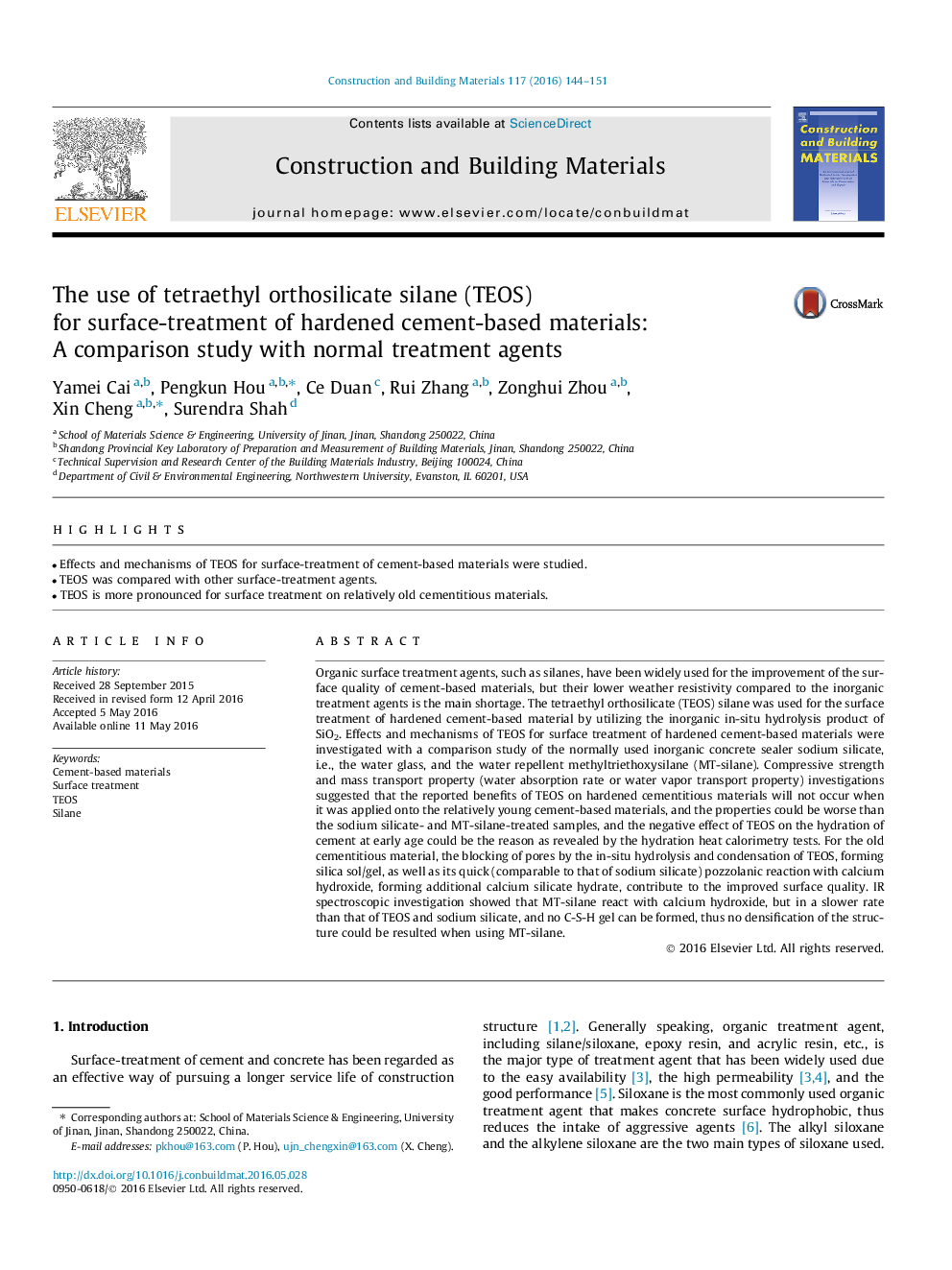| کد مقاله | کد نشریه | سال انتشار | مقاله انگلیسی | نسخه تمام متن |
|---|---|---|---|---|
| 256114 | 503541 | 2016 | 8 صفحه PDF | دانلود رایگان |

• Effects and mechanisms of TEOS for surface-treatment of cement-based materials were studied.
• TEOS was compared with other surface-treatment agents.
• TEOS is more pronounced for surface treatment on relatively old cementitious materials.
Organic surface treatment agents, such as silanes, have been widely used for the improvement of the surface quality of cement-based materials, but their lower weather resistivity compared to the inorganic treatment agents is the main shortage. The tetraethyl orthosilicate (TEOS) silane was used for the surface treatment of hardened cement-based material by utilizing the inorganic in-situ hydrolysis product of SiO2. Effects and mechanisms of TEOS for surface treatment of hardened cement-based materials were investigated with a comparison study of the normally used inorganic concrete sealer sodium silicate, i.e., the water glass, and the water repellent methyltriethoxysilane (MT-silane). Compressive strength and mass transport property (water absorption rate or water vapor transport property) investigations suggested that the reported benefits of TEOS on hardened cementitious materials will not occur when it was applied onto the relatively young cement-based materials, and the properties could be worse than the sodium silicate- and MT-silane-treated samples, and the negative effect of TEOS on the hydration of cement at early age could be the reason as revealed by the hydration heat calorimetry tests. For the old cementitious material, the blocking of pores by the in-situ hydrolysis and condensation of TEOS, forming silica sol/gel, as well as its quick (comparable to that of sodium silicate) pozzolanic reaction with calcium hydroxide, forming additional calcium silicate hydrate, contribute to the improved surface quality. IR spectroscopic investigation showed that MT-silane react with calcium hydroxide, but in a slower rate than that of TEOS and sodium silicate, and no C-S-H gel can be formed, thus no densification of the structure could be resulted when using MT-silane.
Journal: Construction and Building Materials - Volume 117, 1 August 2016, Pages 144–151